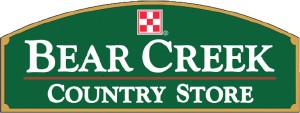 Maximize efficiency to help cut feed costs without impacting production
Maximize efficiency to help cut feed costs without impacting production
Drought, supply chain issues, high grain prices, low hay supply and significantly increased fuel and fertilizer prices all have played a role in the drastically elevated feed costs cattle producers are facing this year.
Feed costs are the single largest expense in the cow-calf sector. Finding ways to manage these expenses could substantially impact your operation’s bottom line.
USDA is predicting seasonally strong demand and higher prices for fed cattle to end the year following the mass liquidations of summer. Efficiently feeding cattle to get the most bang for your buck and effective herd management may help producers to overcome the impact of high input costs and see the benefits of strong demand.
Take Advantage of Forages
Every day a cow can graze for herself is cheaper than anything mechanically harvested to put in front of her. Due to extensive drought, not all producers will have access to grazing. Let’s explore opportunities for those that do:
- Utilizing a grazing program, including pasture rotation, strategic fencing, and forage species variation, can allow for more efficient pasture use.
- Grazing corn stalks in the winter months or cover crops in the spring can extend your grazing season while minimizing the amount of harvested forage needed.
- Restricting cattle to certain sections of land or strategically placing water, supplements or minerals can promote grazing of underutilized pastures.
In areas where grazing isn’t available, forages are brought in. This is usually in the form of hay. When feeding hay, one of the most underutilized practices in the beef industry is forage sampling. Without sampling, you don’t know the nutrients available to your cattle. This leads to over-supplementing your herd and wasting money. It can also lead to under-supplementing and wasting the potential of your cattle. Leverage your forage sample results when planning a supplement program with your local store or Purina representative.
Purina offers forage extender products in our Accuration portfolio that are beneficial when forage is limited. These products are designed to balance nutrient deficiencies in fair or poor-quality forages.
Reducing hay waste is another way to help lower your feed cost. Adjustments to how you store and feed hay to your herd can reduce waste significantly.
Don’t Skimp on Minerals
Every biological process utilizes minerals. Some of the best dollars spent on cattle nutrition is on minerals. Without a balanced mineral program, forage and supplements aren’t as effective. As a result, you may not get the most out of your investment.
Intake levels are important to get the most value from your mineral program. Similar to supplements, over-or-under consumption can impact your pocketbook or your herd’s performance. Purina Wind and Rain minerals are designed to be consumed consistently at target intake levels. Wind and Rain loose bagged mineral offers target intake ranging from three to four ounces per head per day. Wind and Rain mineral tubs provide consumption at size to eight ounces per head per day.
Optimize Herd Management Practices
 Strategically managing your herd can help in keeping feed costs under control. Body condition scores (BCS) are essential to the nutritional management of your herd. Use BCS to separate cattle into smaller groups to provide targeted nutrition. A simple version of this plan for a cow-calf operation would be to divide the herd into three groups:
Strategically managing your herd can help in keeping feed costs under control. Body condition scores (BCS) are essential to the nutritional management of your herd. Use BCS to separate cattle into smaller groups to provide targeted nutrition. A simple version of this plan for a cow-calf operation would be to divide the herd into three groups:
- Yearling heifers
- Two-year-old and Geriatric cows
- Remaining cows.
This separation allows you to provide the specific level of nutrition each of these groups need.
Yearling heifers are still growing and need additional nutrition. Your two-year-old group is in a growth phase and trying to provide nutrition for their first calf, either in gestation or at their side. Geriatric cows can also use a little extra nutrition to maintain their body condition, so grouping them with two-year-olds is appropriate. Separating the rest of the herd allows you to avoid overspending on supplements for cattle that maintain themselves well.
Unfortunately, sometimes a lack of resources forces tough decisions. If the time comes to reduce herd numbers, several factors must be considered.
Pregnancy testing is essential when making decisions on reducing herd size. Open cows should be the first to go because they cost too much to maintain when not producing. Evaluating each cow’s feet and legs, udder quality and temperament could also assist in narrowing down your options.
Set Strategies for your Success
Every decision needs to be tied to the goals of your operation. Tough choices may be forced in the short term due to higher input costs, but remember to make educated decisions with long-term feasibility and sustainability in mind.
Patrick Gunn, Ph.D., beef cattle nutritionist, Purina Animal Nutrition
